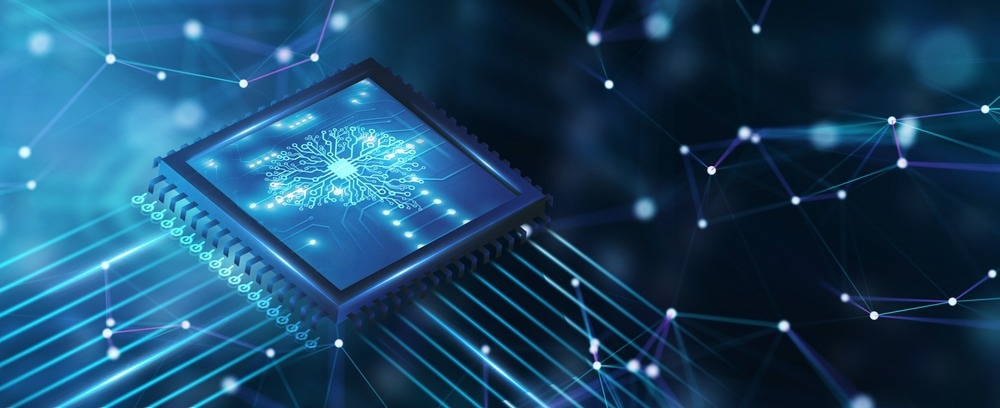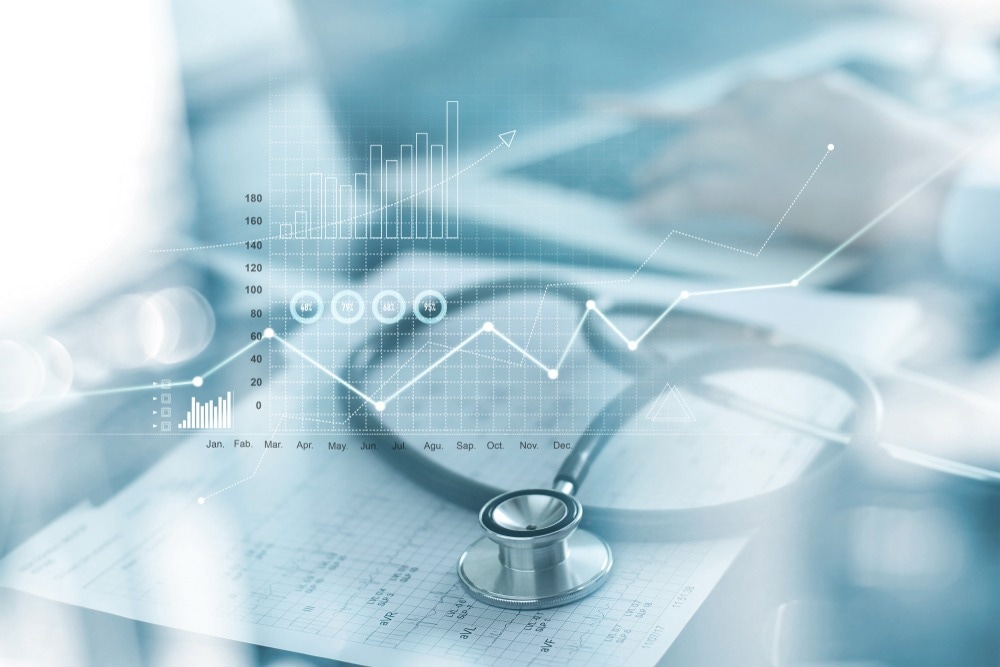In this interview, News Medical speaks to Brian Anthony, co-director of MIT’s Medical Electronic Device Realization Center, about the effect machine learning and sensor technologies have had on medical device engineering, as well as the Bioprocess Data Analytics and Machine Learning course he co-leads at MIT.
Please can you introduce yourself and tell us about your background in medical engineering and medical devices?
I am Brian Anthony, and I am a Principal Research Scientist at MIT's Institute of Medical Engineering & Science and the Department of Mechanical Engineering. I am an expert in sensor systems, everything from novel sensors to the data analytics used to monitor and control those systems.
It turns out that there are a lot of parallels between the medical needs of monitoring individuals and the needs of monitoring and manufacturing. I straddle both realms, looking at manufacturing smart analytics.
Prior to coming back to MIT, I started and sold a couple of different companies, focusing on product design and instrumentation. I teach several different classes at MIT, both in manufacturing systems and in imaging and machine learning applied to physical systems.
You are the co-director of MIT's Medical Electronic Device Realization Center. Can you tell us about the center's work within industry and research, as well as the center's goals?
Charlie Sodini, Joel Voldman, and I started the MEDRC over 15 years ago. At the MEDRC, we started with the recognition that, to do this type of research, you need to bring together the medical device company, the clinicians, and the cutting-edge research that is answering the questions either on the sensor or the machine learning side. We can rapidly get technology piloted at MIT, deployed into the local hospitals, and have data that guides things beyond the scale of what you can do in the academic environment.
The MEDRC is now part of the Institute for Medical Engineering and Science (IMES). IMES is a crosscutting department at MIT, with faculty from all different departments interested in applied research in human subjects and medical technologies. We help facilitate connections to medical device companies and pharmaceutical companies interested in using or developing new technologies in the development of medications or the execution of clinical trials.
You are one of the lead instructors on the MIT "Bioprocess Data Analytics and Machine Learning" course. What topics do you cover during the course, who attends, and what knowledge gaps do the course fill?
I am involved in three courses; Bioprocess Data Analytics and Machine Learning, Smart Manufacturing: Moving from Static to Dynamic Manufacturing Operations, and Industrial Internet of Things: From Theory to Applications. All three are broadly in data analytics in various sectors, whether in agriculture, medicine or medical devices, environment, or even manufacturing and design.

Image Credit: Den Rise/Shutterstock.com
The bioprocess class is very much targeted toward the chemical engineer. It is derived from a class that Richard Braatz and I teach at MIT called Process Analytics, which targets the chemical or mechanical engineer who may have a basic understanding of things like statistical process control or basic feedback control. But, in the current era, whether it be from multidimensional data, meaning cameras, or looking at novel control strategies, there are plenty of opportunities that people are not taking advantage of in either their first jobs coming out of graduate school or undergraduate or what professionals are not taking advantage of now.
One of the ways that machine learning has changed devices is that it has changed the definition or expanded the definition of what a device is.
This class exposes individuals to case studies and fundamental theory. Everything from principal component analysis through to clustering, supervised and unsupervised learning, but ultimately building on a solid foundation of the context of chemical engineering, bioreactors, and bioprocessing.
We want those who take part in the course to make sure that they have a strong appreciation for how data analytics historically has been used and can be used and grown in manufacturing biotherapeutics.
The medical device industry is economically huge, but also significantly impacts human health and medical science. How have recent advances in data and sensor technologies ultimately impacted medical devices and imaging systems?
One aspect of our work we're very interested in is investigating how you assist doctors. For example, we have done work in ultrasound where we add cameras and force sensors to the outside of ultrasound probes. We do that so that when a doctor is acquiring an ultrasound image, and they're holding the ultrasound probe in contact with the person's body and moving it around, you can acquire more information about how you're acquiring the data, what's the orientation and position of the probe with respect to the body, or what's the pressure that's being applied.
That additional data can be used to give better information to the doctor, to give them more accurate dimensional reconstructions of your ultrasound data, or to extract additional material properties or tissue properties out of the image. Or, equally, to help them if they are not as trained as another clinician.
I think we've reached the point, certainly through the pandemic, where there's now a strong recognition of the benefit of the sensors that we can deploy into the home or onto people. We're seeing clinical trials being enabled by shipping off trial technology in a box.
One of the big issues associated with wearables is compliance with remembering to wear the device. We are interested in ambient sensors, so putting technology into the home as part of the floor, walls, and ceiling to be able to get physiological data in a non-contact way. Radar can give you heart and respiration rates, and the body serves as a mirror to radar.

Image Credit: PopTika/Shutterstock.com
For example, Katie Hahm, a doctoral student who just finished her Ph.D. with me, put accelerometers onto the corners of a room’s floor. From the accelerometer data, she extracted clinically relevant biomarkers associated with gait and walking. Gait is a general overall strong indicator of your health and wellness. Getting that data conveniently in the home means you don't have to worry about somebody forgetting to wear the technology.
How important is it to enable people to track their own vitals and empower them to take their health-tracking into their own hands?
I think increasingly, that's more and more important. If we can get the technology into the home cost-effectively, we can move the curve significantly and deal with some of the inequities in healthcare, both in the US and worldwide. In those more rural environments, I think there is a moral imperative to enable the individual with the tools to robustly acquire this data, share it with their caregiver, and be active participants in their own health.
Health informatics is one of the fastest-growing areas in health. How has data and the subsequent analysis of that data revolutionized the design and development of medical devices and solutions?
I think ten years ago, there was more of a hesitancy from the clinical professionals to know how to use such data. The COVID-19 pandemic made apparent and obvious the benefits of data acquired in the context of daily living.
As we look at data analytics, one of the interesting opportunities is the patient-centered approach to care, both in the clinic and at home. These technologies allow us to potentially ease the medical care burden in traditional environments. It allows for the potential serving of populations that have been underserved by proliferating technology out to them in a way that they can use it. Now we can get high-quality data in clinical environments that don't have all the instrumentation that a big hospital would.
Episodically, any one measurement may be noisy. Still, the fact that you're able to acquire this data over time now makes it more possible for a caregiver to customize care based on how you're evolving at week or month intervals.
What are the next steps for you and your work? Do you have any exciting projects coming up?
Regarding manufacturing and medical biomanufacturing, we continue to do a lot of work and active deployment with companies to answer the question, "how do we incorporate machine learning techniques in real-time to guide in real-time?
We continue to work within the area of ambient sensors. We are deploying sensors into floors, walls, ceilings, and the things you interact with in your home, like the doorknobs. So, all this information that is typically lost, like your grip strength and your gait, can be captured.
We published a paper on the first fully non-contact laser ultrasound system before the pandemic. Lasers light can be used to generate sound. This has been known and practiced in the non-destructive testing industry for a long time. If you take a pulse laser and you shine that laser onto a metal, that pulsating of light will be locally absorbed and turn into a sound wave that propagates. Each time you hit it with a little pulse of light, a sound wave will propagate into the medium, hit off boundaries, and come back.
Using light, I can get sound created in a material and then detect how that sound is propagated and bounced back to the service. We're able to do that now on humans. Using light, we demonstrated the generation of an ultrasound image from two meters away. We continue to research in that space, where ultrasound is great because it's non-ionizing and fundamentally safe.
Where can readers find more information?
About Brian Anthony
Dr. Anthony is Director of MIT’s Master of Engineering in Manufacturing Program, Co-Director of the Medical Electronic Device Realization Center, Associate Director, MIT.nano and lead instructor at MIT Professional Education.  With over 25 years experience in product realization—Dr. Anthony won an Emmy (from the Academy of Television Arts and Sciences) in broadcast technical innovation—Dr. Anthony designs instruments and techniques to monitor and control physical systems. His work involves systems analysis and design and calling upon mechanical, electrical, and optical engineering, along with computer science and optimization, to create solutions.
With over 25 years experience in product realization—Dr. Anthony won an Emmy (from the Academy of Television Arts and Sciences) in broadcast technical innovation—Dr. Anthony designs instruments and techniques to monitor and control physical systems. His work involves systems analysis and design and calling upon mechanical, electrical, and optical engineering, along with computer science and optimization, to create solutions.
The focus of Dr. Anthony’s research is in computational instrumentation—the design of instruments and techniques to measure and control complex physical systems. His research includes the development of instrumentation and measurement solutions for manufacturing systems and medical diagnostics and imaging systems. In addition to his academic work, he has extensive experience in market-driven technology innovation, product realization, and business entrepreneurship and commercialization at the intersection between information technology and advanced manufacturing. His teaching interests include the modeling of large-scale systems in a wide variety of decision-making domains and the development of optimization algorithms and software for analyzing and designing such systems. He has extensive experience in market-driven technology innovation as well as business entrepreneurship.